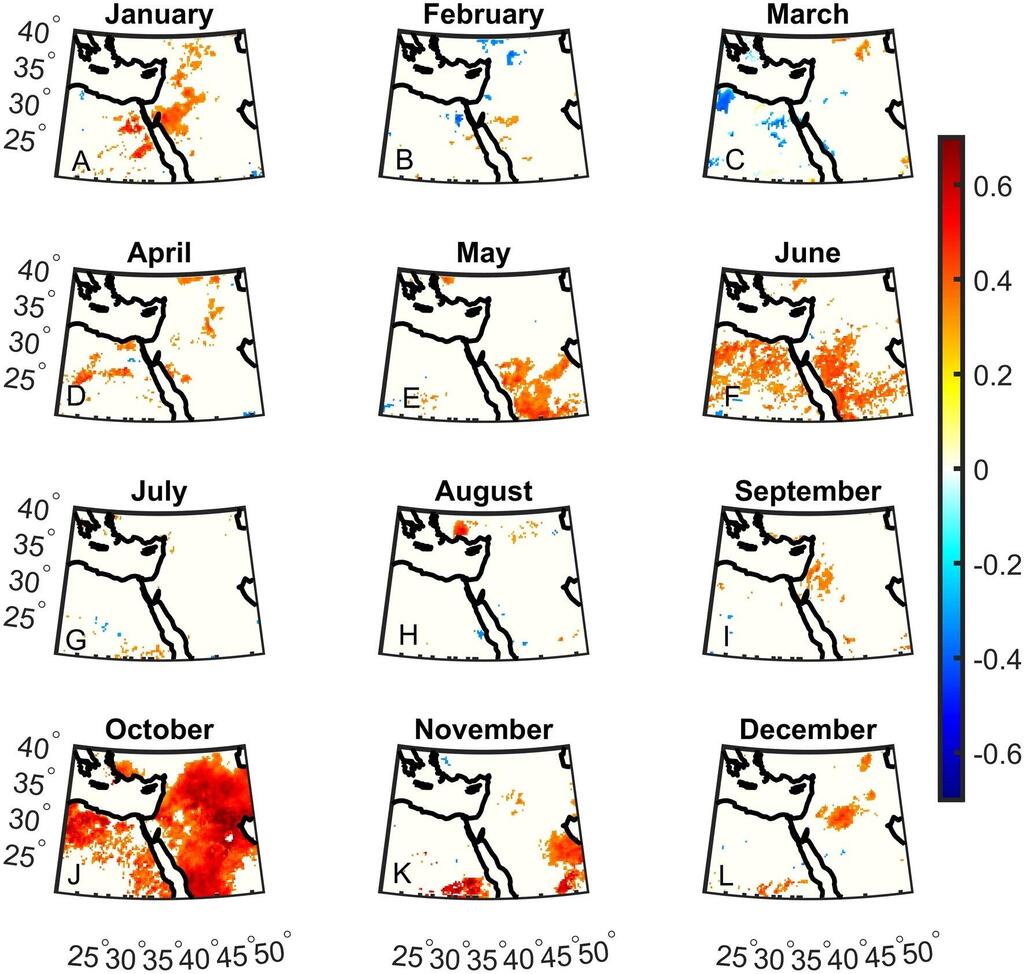A study conducted by researchers from the Hebrew University of Jerusalem has uncovered a direct correlations between conditions in the Indian Ocean and precipitation in the Middle East, which may lead to improved forecasting of autumn rains in Israel.
More stories:
The study highlights a noticeable rise in significant climate indices in the Indian Ocean over the past four decades, indicating climate patterns developing in this ocean have potential regional implications.
Led by Dr. Assaf Hochman, Prof. Hezi Gildor, and Noam Shachar from the Hebrew University of Jerusalem’s Institute of Earth Sciences, the study — published in the Scientific Reports journal — sheds light on the complex dynamics of sub seasonal precipitation in the Middle East and reveals significant correlations with important climate indices.
The study offers insights into the predictability of precipitation patterns. Its findings regarding rainfall patterns provide vital information for policymakers, meteorologists, and stakeholders involved in water resource management and agriculture in the Middle East, addressing planning and implementing efficient strategies for water conservation and distribution, while considering concerns about water scarcity in the region.
Since Middle Eastern agriculture relies heavily on rainfall for irrigation, the study’s findings may assist farmers and policymakers in anticipating and adapting to changing precipitation patterns. This knowledge is particularly important for crop planning and mitigating the potential impacts of extreme weather events on regional agriculture, expected to increase in the coming years, while enhancing the resilience of the region's agriculture.
3 View gallery


Indices comparing heat in the Indian Ocean and rainfall in the Middle East
(Illustration: Scientific Reports (2024). DOI: 10.1038/s41598-024-53677-x)
The study primarily delves into the complex relationships between climate indices such as changes in sea surface temperatures in the Indian Ocean and variations in Middle Eastern rainfall. Through meticulous analysis of data from October, a crucial month marking the beginning of the rainy season, the researchers found strong correlations, with coefficients around 0.7, persisting for up to two months of lag.
In other words, changes in sea surface temperatures in the Indian Ocean during summer could potentially serve as an indicator for the amount of rainfall at the onset of the rainy season in Israel and the surrounding region in the foreseeable future.
Moreover, the study notes a significant rise of about 0.4 degrees Celsius in the Indian Ocean temperature change index over the last four decades. This trend highlights the evolving climate patterns in the Indian Ocean and strengthens their influence on the dynamics of Middle Eastern precipitations. The findings indicate this trend will continue into the 21st century, with potential regional implications as a result.
The study identifies significant correlations between Indian Ocean sea surface temperatures and maximum daily rainfall in October, emphasizing their role in extreme weather events. These extreme events often result in flash floods and significant damages, primarily in Israel’s south and east.
By attributing a noticeable portion of October's rainfall variations to anomalies in Indian Ocean sea surface temperatures, the researchers clearly showed how these temperature fluctuations influence air currents above the oceans, known as Walker circulation, shaping regional precipitation patterns.
"Our findings underscore the importance of understanding the intricate ocean-atmosphere interactions and their implications for Middle Eastern climate variability. By elucidating the connections between climate indices and sub-seasonal precipitation anomalies, we pave the way for improved prediction and adaptation strategies," said Dr. Hochman.



